Introduction to Realism Art Movement
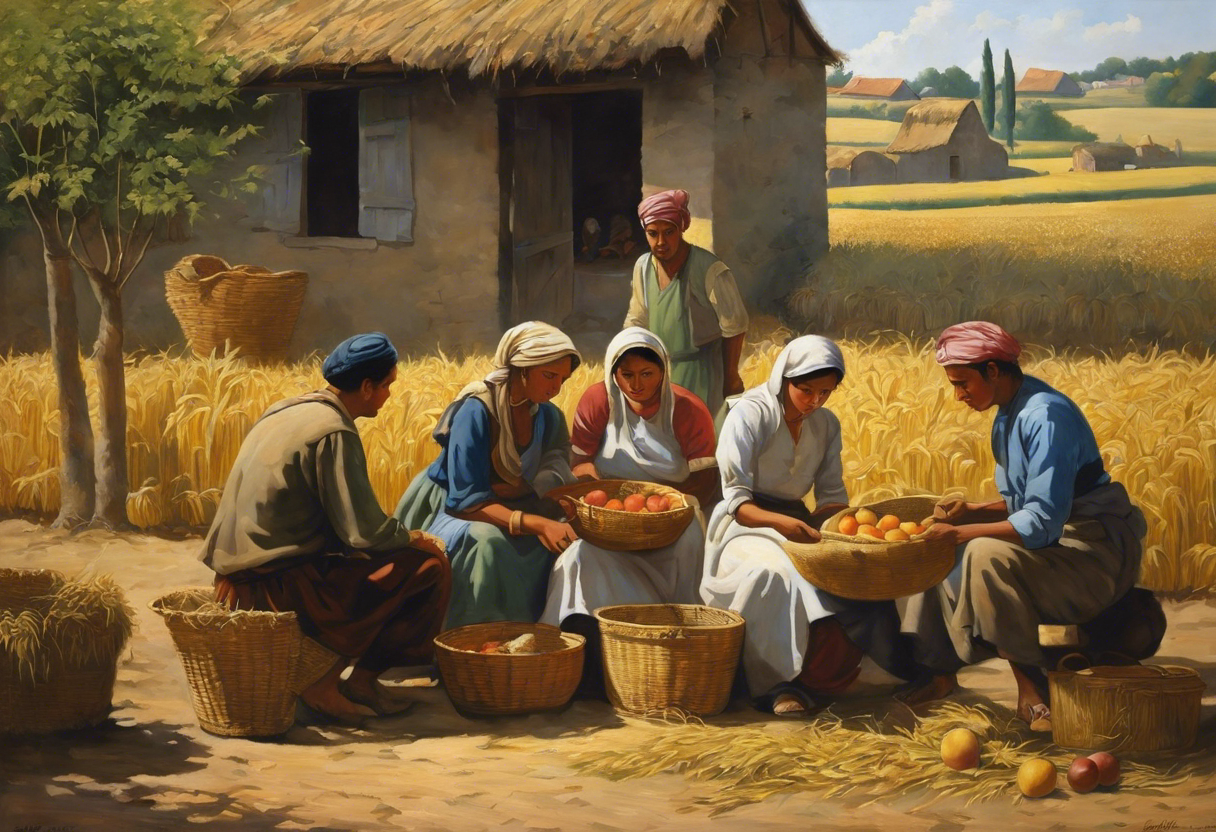
The Realism Art Movement emerged as a significant cultural and artistic development predominantly in the mid-19th century. Amidst the backdrop of the rapidly industrializing European landscape, Realism was born as a response to the escapist themes of Romanticism and the grandeur of history painting. It championed the depiction of everyday life and ordinary people, shunning the idealized classic subjects and dramatic scenes that had thus far dominated the visual arts.
Artists who pursued Realism sought to portray life with honesty, delving into the nitty-gritty aspects of daily existence. This approach opposed the stylization and exaggeration found in previous art movements. Realism was a democratizing force in the art world, recognizing the worthiness of all subjects, including the working class, the poor, and the overlooked aspects of society. In this regard, Realism can be seen not just as an aesthetic choice but also a form of social commentary.
Realist artists often employed a technique that paid close attention to detail, with a focus on strong, natural lighting and shadows to enhance the sense of authenticity in their works. They refrained from beautifying or altering their subjects, instead opting for accuracy and naturalism.
- Key figures of the Realism movement include:
- Gustave Courbet, who is frequently credited with leading the movement through his manifestos and paintings like “The Stone Breakers.”
- Jean-François Millet, known for his portrayals of peasant farmers.
- Honoré Daumier, recognized for his satirical illustrations and paintings that often critiqued society.
The Realism Art Movement was not confined to painting alone but spanned across other areas such as literature and theater, influencing minds and serving as a precursor to later naturalistic and social realist styles.
The Founders and Forebearers of Realism
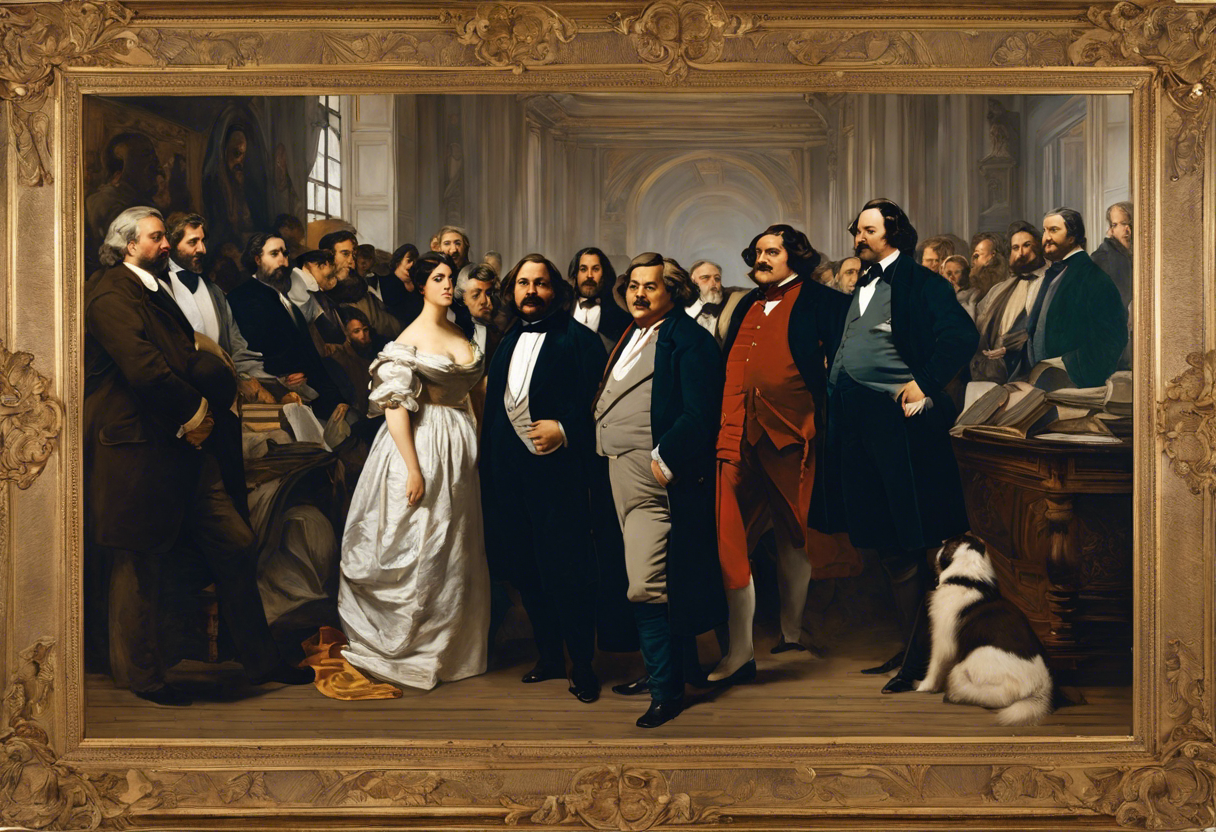
Realism, as an art movement, germinated in mid-19th century France, as a reaction against the highly stylized and emotive work of the Romantic period, as well as the artificial drama of Neoclassicism. Among its earliest proponents, Gustave Courbet is often heralded as the leader. Courbet’s own manifesto, “Le Réalisme,” underscored the need for truthful representation, unvarnished by imagination. His iconic works, such as “The Stone Breakers” and “A Burial at Ornans,” exemplify Realism’s focus on everyday subjects, as opposed to the grandiose historical, religious, or mythological scenes favoured by prior movements.
- Jean-François Millet followed suit, capturing the dignity and toil of peasant life through works like “The Gleaners” and “The Angelus.” His canvases resonated with a moral truth, aligned with Realist sensibilities of genuine portrayal.
- Édouard Manet’s controversial paintings, including “Olympia” and “The Luncheon on the Grass,” challenged both the technique and subject matter of Realism. While his approach laid the groundwork for Impressionism, he is often considered a key figure in the transitionary period of Realism.
- Honoré Daumier, a multifaceted artist, wielded Realism through satirical lithographs that criticized the social and political backdrop of his time. His artistic legacy demonstrates that Realism wasn’t contained to just painting, but permeated other visual arts as well.
The Realist movement, while varied in its execution, drew from shared threads—an unfiltered view of daily life, a predilection for contemporary subjects, and a democratization of genre by focusing on ordinary people and events. These pioneers of Realism laid the groundwork for future art movements, shifting the trajectory of art history with canvases brazenly steeped in the lives of the common folk.
The Philosophical Underpinnings of Realism in Art
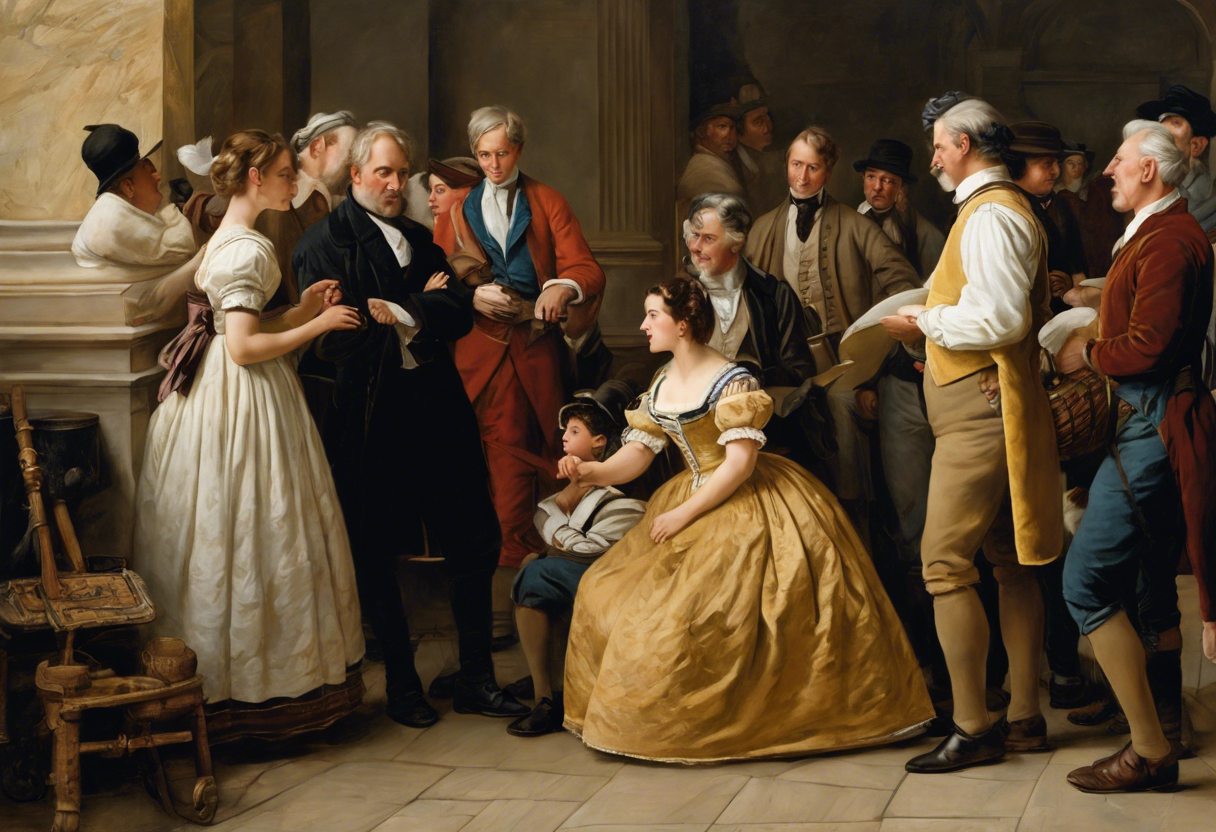
Realism in art emerged as a reaction to the heightened emotionalism and drama of Romanticism, and it is grounded firmly in philosophical tenets that espouse a dedication to depicting everyday life with unvarnished truth. This movement, originating in the mid-19th century, was also a response to the Industrial Revolution, with artists seeking to grasp and portray the rapid social changes of their time.
At the core of Realist philosophy is the belief that the ordinary and banal aspects of life are as worthy of artistic representation as the historically grandiose or classically beautiful. Realism forsakes the idealized interpretations that preceded it, focusing instead on ordinary subjects and emphasizing the authentic over the fantastical.
- The philosophy behind Realism also intersects with positivism, a system of thought which suggests that knowledge should be acquired through empirical observation. Realist artists were, therefore, positivists in their approach to art, observing and depicting the world around them with scientific precision and objectivity.
- Realism further contemplates ethical considerations. Realist artists often sought to bring attention to social issues and the realities of the common people, aiming to provoke thought and possibly instigate change.
- The movement was influenced by the democratization of art, where art became more accessible to the general public. It was a move away from the exclusive patronage system, which had often dictated the subject matter and function of art.
Artists such as Gustave Courbet and Honoré Daumier became pivotal figures, interpreting Realism philosophy through their canvases. Courbet’s assertion that he “could not paint an angel because he had never seen one” encapsulates the practical and experiential foundation of Realism. This focus on the observable world fostered a new proximity between art and life, embedding Realist philosophy deeply within the fabric of the movement’s aesthetics.
Key Characteristics and Techniques of Realist Painting
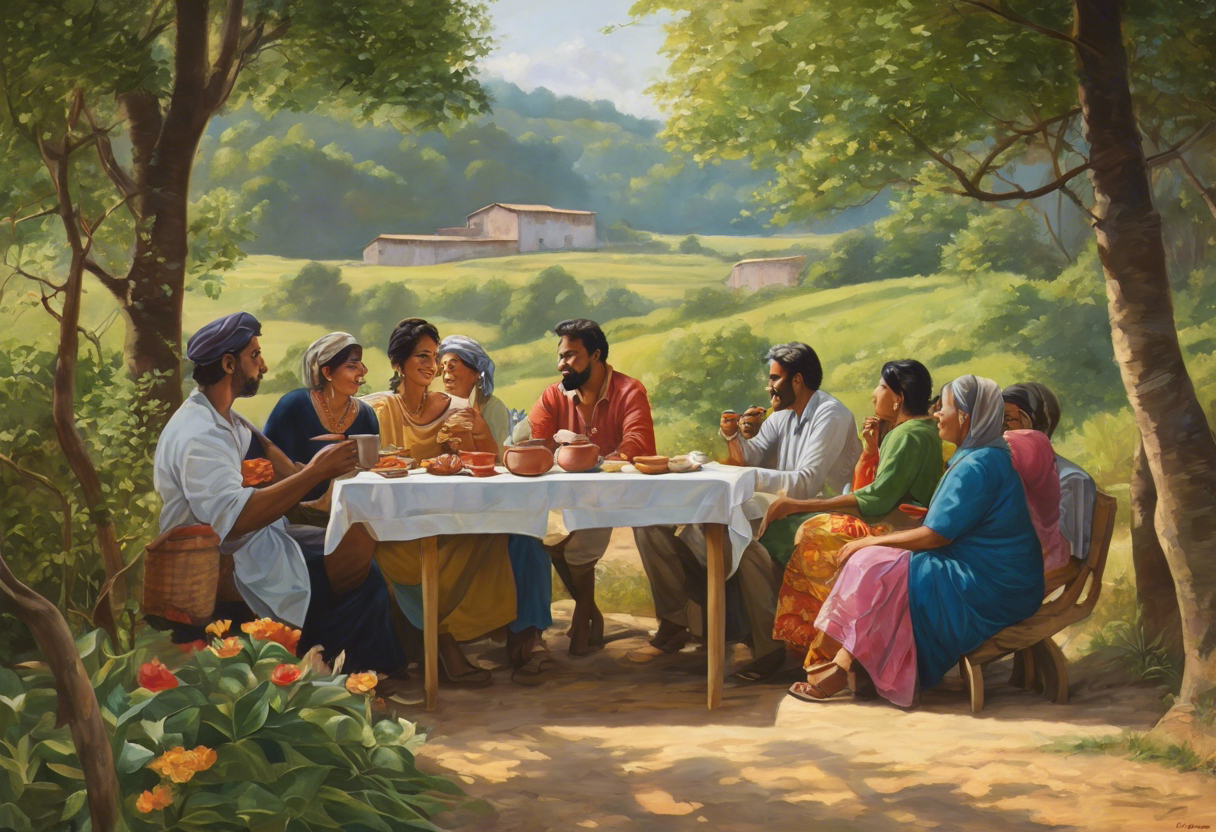
The Realist painting movement, emerging in the 19th century, notably set itself apart by several distinctive characteristics and techniques aimed at capturing life with a new level of truthfulness.
- Observation of Everyday Life: Artists shifted their focus from grandiose historical scenes and classical mythology to ordinary people and everyday activities. They endeavored to depict life authentically, without embellishment or romanticizing.
- Attention to Detail: Realist painters portrayed their subjects with meticulous attention to detail. The textures, lighting, and shades in their work were carefully rendered to reproduce the appearance of the real world as closely as possible.
- Use of Chiaroscuro: The technique of chiaroscuro, involving the bold contrast between light and dark, was frequently employed to bring a three-dimensional quality to the subjects, bestowing them with weight and volume.
- Lack of Visible Brushstrokes: In Realist art, brushstrokes were often smoothed out to hide the artist’s hand and reinforce the illusion of reality. This technique diverged from the more expressive brushwork of earlier romantic paintings and the later impressionists.
- Democratization of Subjects: Realist artists democratized their subjects by treating all with equal importance, whether painting a street worker or a person of high status. This deliberate choice championed the value of the common person’s experiences.
- Objective Approach: These artists adopted an objective approach, observing their subjects without evident emotional or moral judgment. This neutrality was essential to their quest for an accurate depiction of real life.
Realist painters also drew upon scientific advancements of the era, incorporating new understanding of light and anatomy to heighten the realism in their work. Techniques such as linear perspective and accurate proportions were rigorously applied to create convincing scenes that resonate with the viewer’s sense of reality.
Major Works and Artists of the Realism Art Movement
The Realism Art Movement, emerging in mid-19th century France, marked a pivotal turn from romanticism and idealism to the depiction of ordinary life. Realist artists sought to represent subjects in their natural state, often focusing on the working class and everyday scenes.
- Gustave Courbet is often regarded as the leader of the Realism movement. His significant works include “The Stone Breakers” (1849), which portrays laborers breaking stones on a road, and “A Burial at Ornans” (1849-50), highlighting a provincial funeral with stark reality.
- Jean-François Millet is notable for his depictions of peasant labor. “The Gleaners” (1857) is among his masterpieces, presenting peasant women gathering leftover grains after the harvest.
- Édouard Manet, although associated with Impressionism, crossed paths with Realism. His works, like “Olympia” (1863) and “The Luncheon on the Grass” (1863), caused controversies due to their realistic portrayal of modern life and frank representation of the nude.
- Honoré Daumier used Realism to critique society. His lithographs and paintings such as “The Third-Class Carriage” (1862-64) reflect on the conditions of the working class.
- Camille Corot delved into landscapes, bridging Realism and the emerging Impressionism. His “View from the Farnese Gardens. Morning” (1826) captures nature with a realistic yet poetic touch.
Realism was not confined to France. Winslow Homer in the United States captured American life and landscapes in works like “Snap the Whip” (1872).
The movement also influenced literature and photography, with figures like Émile Zola and Nadar embracing Realism principles in their respective fields. Today, Realism’s legacy continues to impact contemporary art, illustrating the enduring power of capturing life as it is.
Realism’s Impact on Later Art Movements and Modern Art
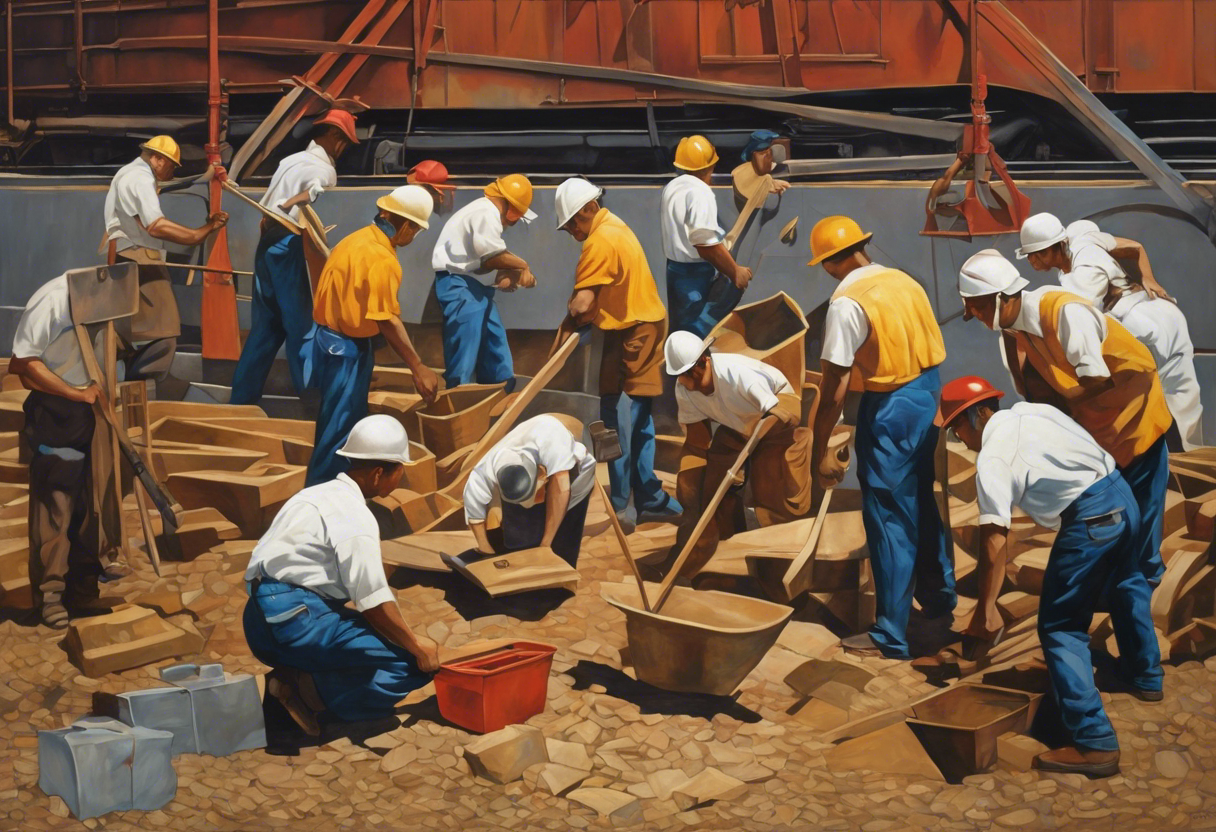
The Realism art movement established a significant foundation for the evolution of modern art by emphasizing everyday life and ordinary people as worthy subjects. Realism’s dedication to depicting the world truthfully, without idealization, set a new standard for artistic authenticity that influenced numerous later art movements.
- Impressionism: The next major movement, Impressionism, evolved directly from Realism. While Impressionists maintained a focus on everyday subjects, they diverged in their technique, portraying the fleeting effects of light and color. Realism’s exacting approaches informed these artists’ representation of the immediate, though with a lighter, often more colorful touch.
- Social Realism: During the 20th century, Social Realism emerged as a direct descendent of Realism, with artists creating works designed to prompt societal change. They continued the Realist tradition of portraying life as it is but concentrated on social critique and reform, often highlighting the plight of the working class and the poor.
- Photorealism: In the late 20th century, Photorealism took Realism’s exacting standards to a new level. Artists closely mirrored photographic images, pushing the boundaries of technical prowess in painting and commenting on the proliferation of photography and media in contemporary life.
The stark portrayal of reality in Realist art also opened avenues for modern artists to explore psychological depth and emotional intensity. Abstract art, though seeming to diverge dramatically from Realism, often seeks to capture the essence of subjects, a conceptual lineage traceable back to Realist principles. Realism’s focus on the genuine human experience continues to resonate in contemporary art forms, from installations to digital media, grounding them in the Realist tradition of truthful representation and relevance to everyday life.
Analyzing the Sociopolitical Influence of Realism Art
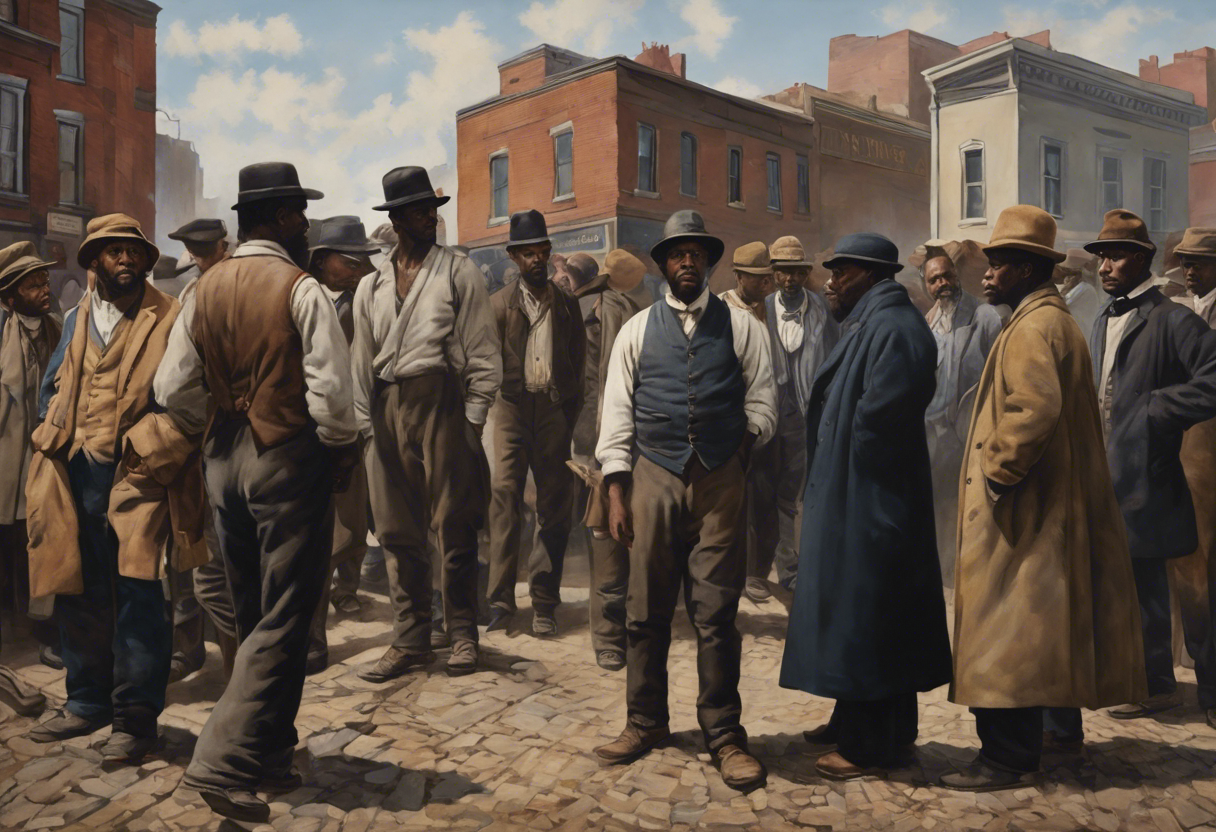
Realism art, emerging in mid-19th century France, profoundly impacted the sociopolitical landscape of the time. As an artistic movement, it endeavored to paint life accurately, without embellishment or idealization. This commitment to depicting the quotidian aspects of life had far-reaching implications, not just for art but for society itself.
- Artists like Gustave Courbet and Jean-François Millet showcased ordinary people—peasants and workers—thereby acknowledging their existence and struggles. By bringing the lives of the lower classes to the forefront, Realism questioned the status quo and posed a challenge to the social hierarchy entrenched in European society.
- Realism art became an instrument for social critique. The depictions of the hardships faced by everyday people played a role in raising public awareness and fostering empathy. This, in turn, contributed to discussions that were precursors to social reforms.
- In a period dominated by historical and mythological themes, Realist painters instead chose to focus on contemporary issues, such as the consequences of the industrial revolution, urbanization, and the plight of the working class. This shift in subject matter reflected and influenced the interests and concerns of society at the time.
- Furthermore, Realism diverged from the artistic conventions of the Academy. As such, it offered a new form of visual language that communicated directly with the masses, free from the filtered visions presented by institutions. It was an early step towards democratizing art and reflecting the experiences of a broader segment of society.
Through Realism, art transformed from a mere aesthetic endeavor into a commentary on the human condition and societal norms. Its influence transcended canvases and penetrated sociopolitical thought, hinting at the immense power art holds in shaping and reflecting societal values.
Realism in Art Versus Photography: A Comparative Discussion
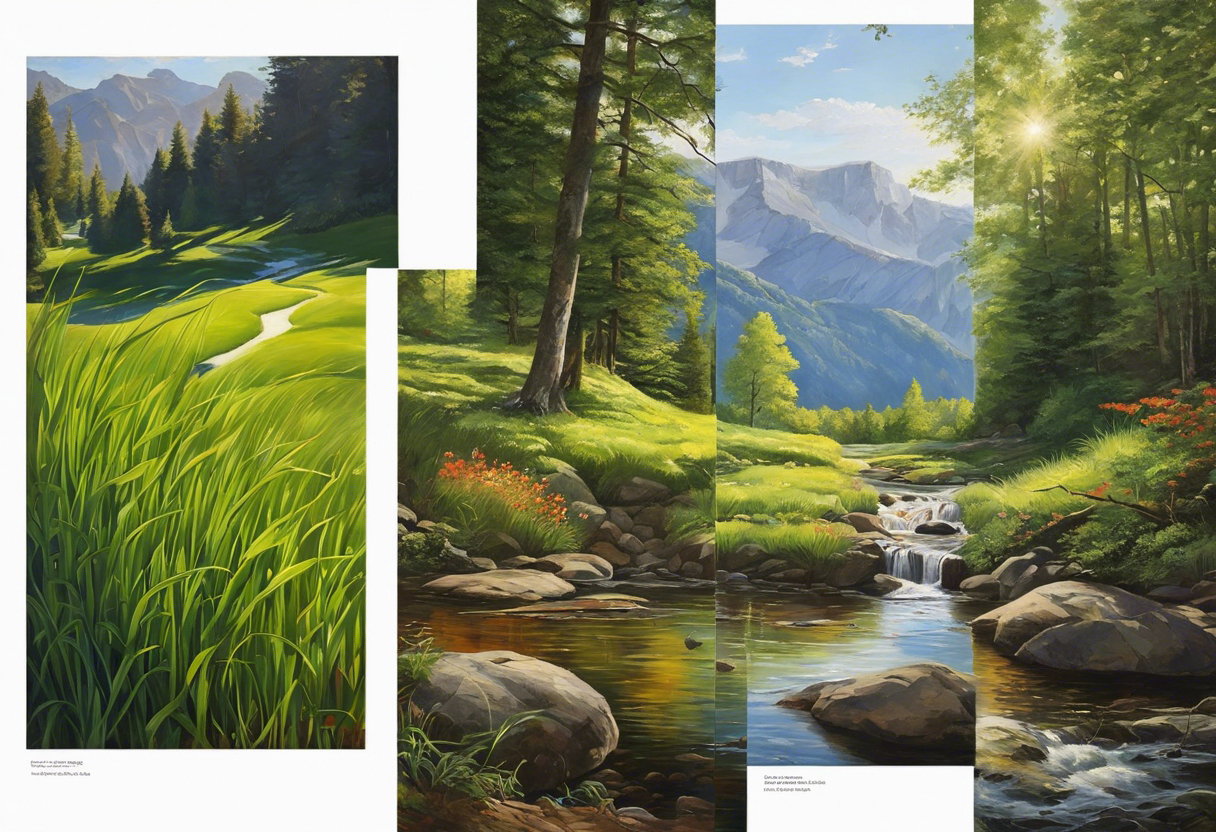
Realism in art and photography shares a common goal: to represent subjects truthfully without artificiality and avoiding speculative fiction, and exaggerated artistic conventions. The Realism art movement, which emerged in the 19th century, was a reaction against the dramatic and emotive styles of Romanticism. Similarly, photography, developed during the same time period, quickly became a popular medium for capturing the world with precision and detail.
Realism in Painting:
- Painters such as Gustave Courbet and Jean-François Millet depicted everyday life with a level of detail that emphasized the ordinary over the idealized.
- The focus was on genuine depictions of labor and the unembellished lives of common folk.
- Artists used techniques like chiaroscuro and careful color palettes to mimic how light interacts with the subjects.
Photography’s Rise:
- With the invention of the camera, photographers could capture a moment in time with unvarnished veracity.
- Early photographers like Louis Daguerre made portraits and chronicled events, influencing the concept of truthfulness in visual arts.
- The camera offered an empirical accuracy that was previously unattainable by brush and paint.
The comparative reliability of these two mediums has sparked debate. While a photograph can arguably be a direct imprint of reality, artistic interpretation is inherent in painting. Realist painters imbue their work with a subtle commentary and personal perspective, despite striving for realism. Photographers, conversely, manipulate reality through framing, lighting, and even developing techniques, meaning photographs are not entirely devoid of subjective influence.
The interplay between the artistic intent of Realist painters and the presumed objectivity of photographers prompts a deeper consideration of what “realism” truly is. Both mediums bring forth an authenticity and fidelity to the subject matter but ultimately remind us that all human-made representations of reality are influenced by individual perception and cultural context.
The Legacy of Realism Art Movement in Contemporary Culture
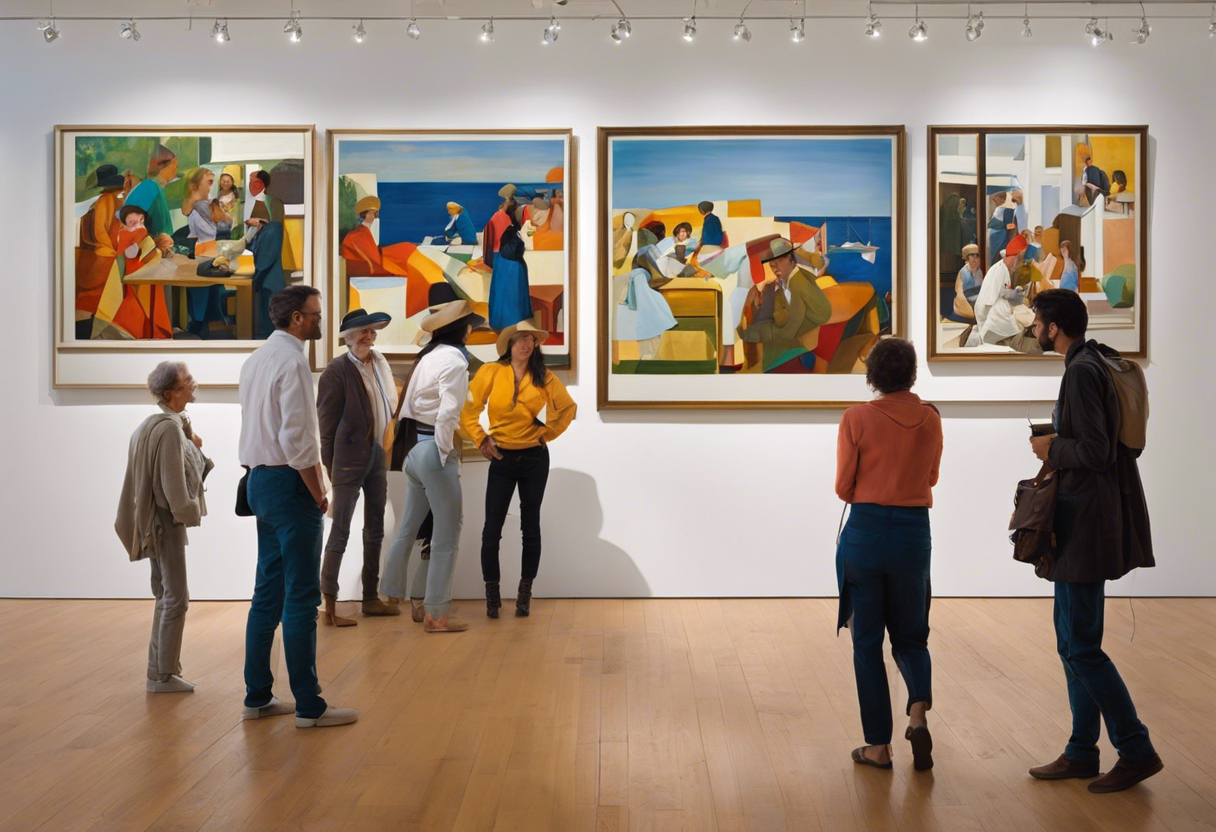
The Realism art movement has bequeathed a profound legacy upon the contemporary cultural milieu through its enduring principles and aesthetics. Artists today continue to draw upon Realism’s commitment to truthfulness and representation of everyday life. This legacy is evident in several aspects of modern culture:
- The thriving genre of photorealistic painting adheres to Realism’s ethos, as artists like Chuck Close and Richard Estes showcase their ability to mimic reality with precise detail.
- In cinema, the neorealist movements in Italy after World War II and the cinéma vérité in France were direct descendants of Realism, emphasizing naturalistic acting and on-location shooting to reflect the human condition authentically.
- Realism has permeated the realm of literature, with authors like Cormac McCarthy and Alice Munro capturing the quotidian aspects of life with an unfiltered lens, much like their painterly predecessors.
- Reality television, despite its often scripted scenarios, sells itself on the premise of exhibiting real-life situations, a modern mass media interpretation of Realist principles.
- The digital art world, especially with the rise of virtual reality, utilizes Realist traditions to create deeply immersive experiences that mirror our physical world.
The Realism movement also invites a critical discourse on contemporary social issues. Artists employ Realist techniques to challenge viewers’ perceptions, presenting unembellished depictions of societal plights, thereby perpetuating the movement’s original intent of social critique.
By advocating for an unvarnished portrayal of the world, the legacy of Realism persists as an influential cornerstone in the diverse landscape of contemporary culture, continuing to shape and inspire the creation and appreciation of art that reflects the complexities of human existence.
Concluding Thoughts on the Significance of Realism in Art History
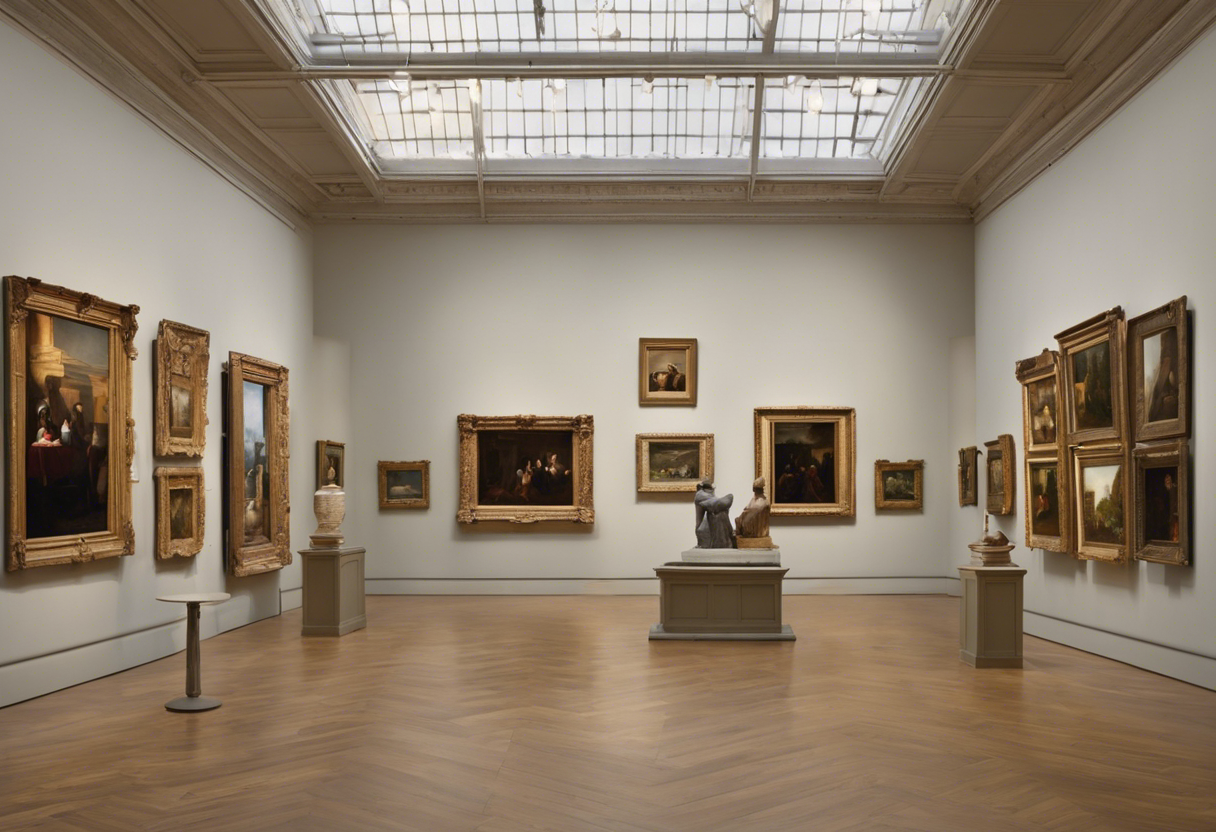
The Realism art movement has left an indelible mark on the canvas of art history. It was an embracement of the ordinary, an ode to the tangible world unfiltered by romantic idealism or dramatic exaggeration. The emphasis on accuracy and unembellished depiction of everyday life made Realism revolutionary, forging a path for future generations to see the world through a more honest and perhaps, a more compassionate lens.
Realists rejected the longstanding traditions that valued the ethereal and the allegorical. Instead, they concentrated on social contexts, the human condition, and the environment in which they lived. In doing so, they also highlighted the socio-economic realities of their time, subtly urging for social reform and reflecting a cultural shift towards modernity.
- The art movement galvanized new techniques that scrutinized the play of light, shadow, and realism in everyday settings.
- It broadened the scope of subject matter to include scenes of labour, portraits of the working class, and mundane domestic activities.
- It helped demystify the concept of “high art”, making masterpieces more relatable and accessible.
- It paved the way for other critical movements in art, such as Impressionism and Post-Impressionism, which continued to question and redefine the boundaries of art.
In the grand narrative of art history, Realism’s significance cannot be overstated. While its imagery now belongs to a bygone era, its spirit continually inspires contemporary artists. There’s a timeless resonance in its call to look at the world as it is, with its beauty and brutality alike. This movement serves as a powerful testament to art’s ability to document, challenge, and transform the human experience.
